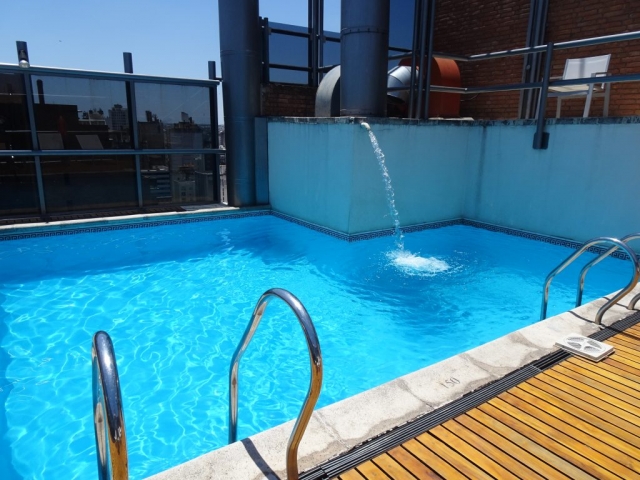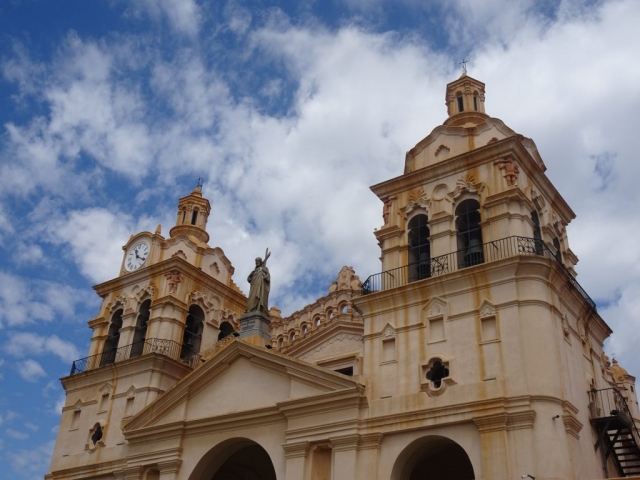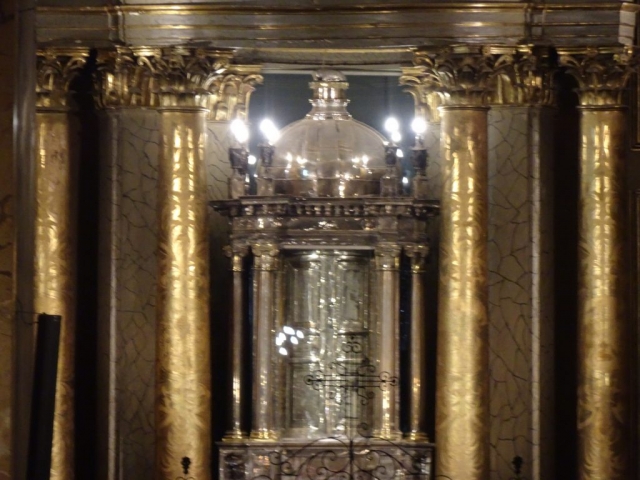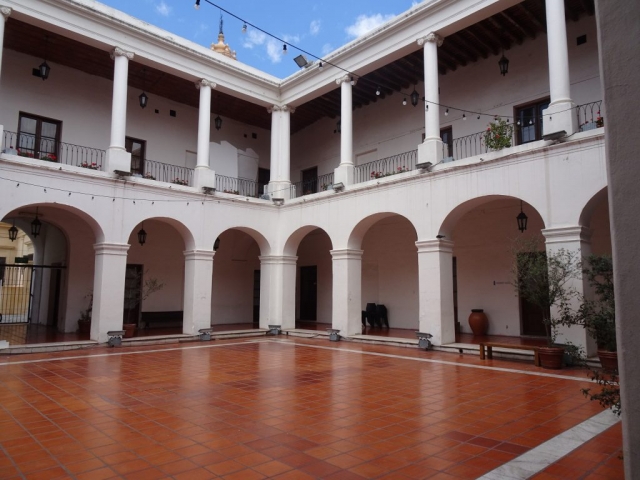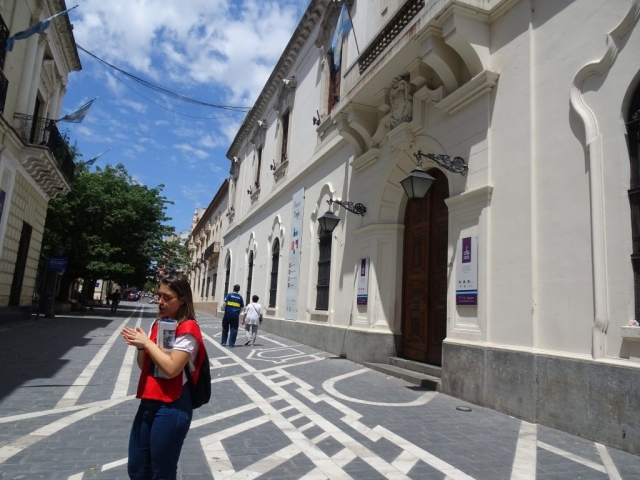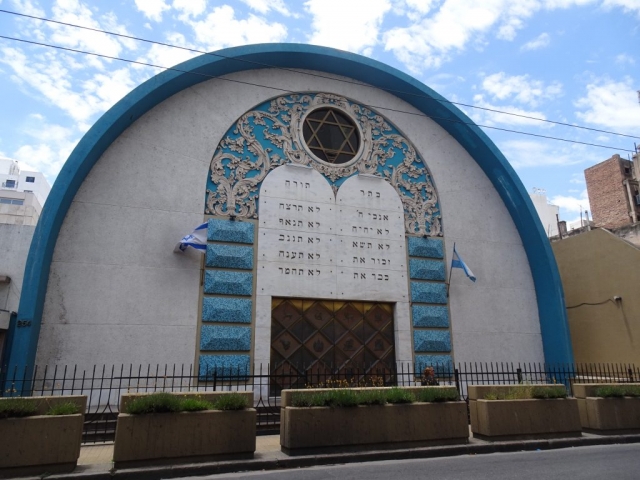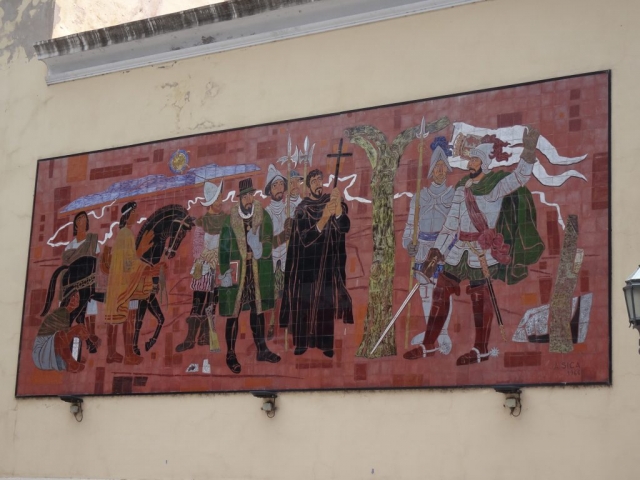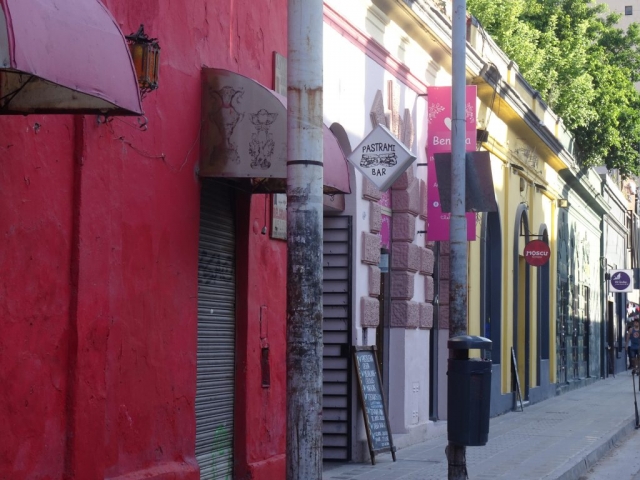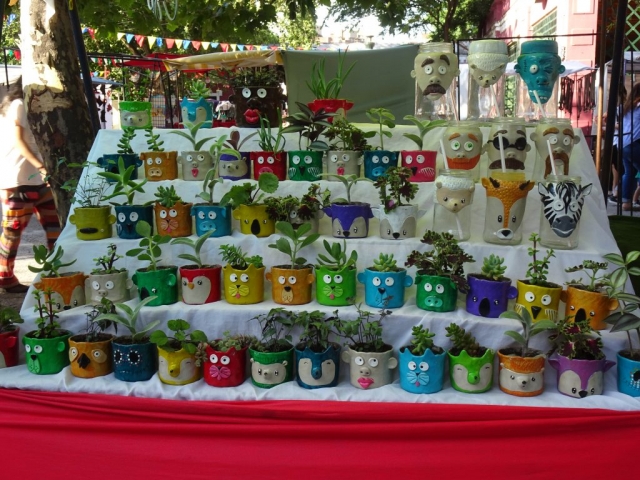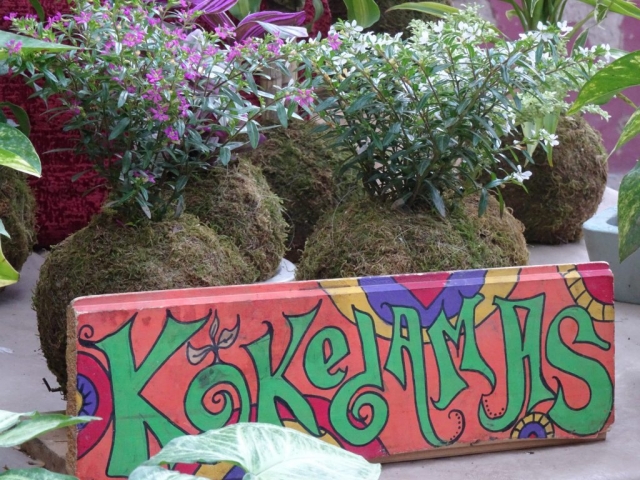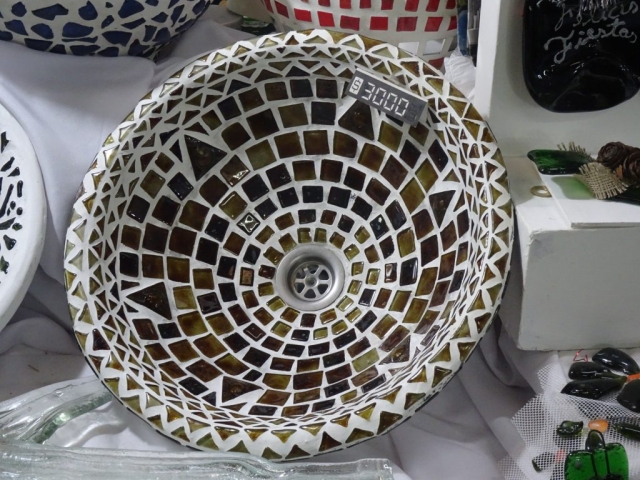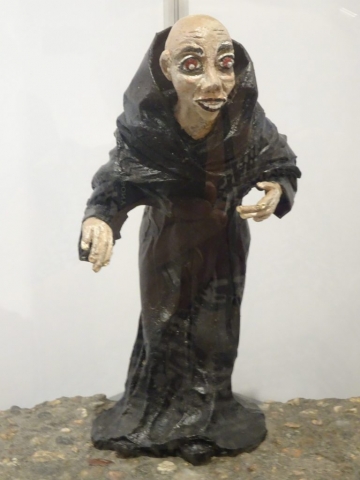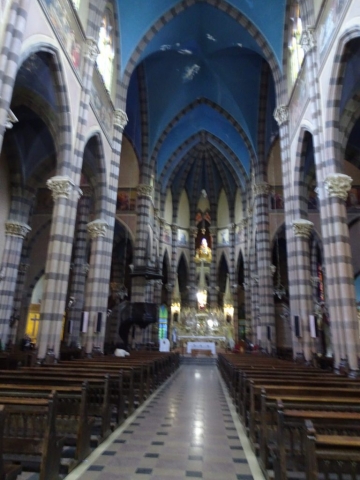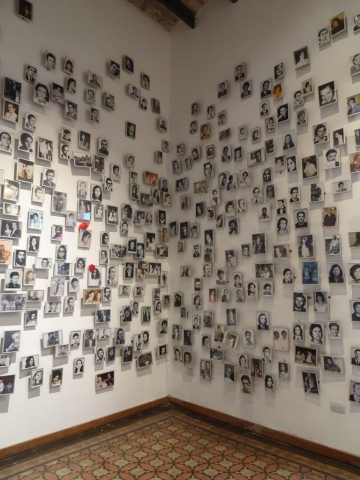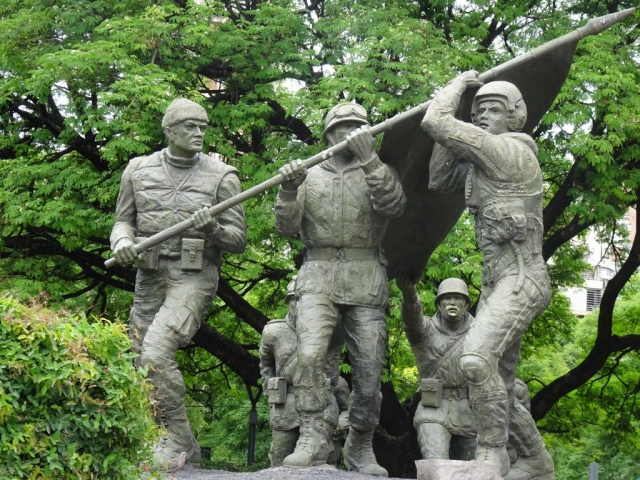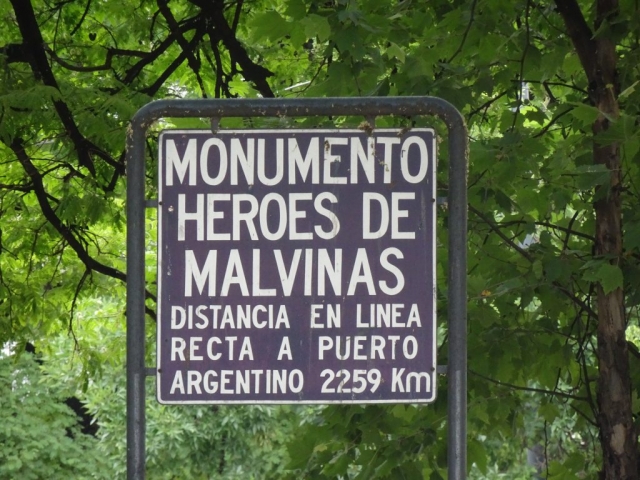Saturday 24 – Day 56 Córdoba
Unfortunately we had an early plane to catch to Cordoba and so had no time to visit the falls from the Brazilian side of the falls. We got up early, finished packing, and went down to check out, order a taxi, and have breakfast. We were at the airport by 07:15. The airport was only small and there were two planes going out within ten minutes of each other, which caused some pressure on their processes and a lot of stressed out PA announcements, but eventually we took off on time.
As it was a small domestic flight it only took us fifteen to 20 minutes from landing to exiting the terminal. Many taxis in South America run on gas, so much of the boot is taken up by a large gas cylinder, frequently our 2 bags do not fit in the boot so one has to ride in the passenger seat. The journey into town showed that Cordoba was not Buenos Aires – it was obviously much less prosperous and a little scruffy.
The hotel was a four star tower in the city centre, the NH Córdoba Urbano, which is part of a chain of hotels around Spain, Europe and South America. It was reasonably furnished and equipped, although getting due for a refurbishment. It had a small pool on the roof on the 15th floor that was scareingly high. After checking in we headed out for a walk around.
The city was busy, noisy, dirty, and hot. We wandered around a nearby mall for a while, then headed towards the main square – inevitably called Plaza San Martin. As we approached the square, we saw a guy carrying a large extravagant cake. This seemed out-of-place and it drew our attention, so we noticed where he went with it – into an old building with a long arcade along the side of the square. It looked like it was a restaurant, and we followed him in.
The waiters were dressed, as they often are in established Argentinian restaurants, in white shirts, and ties, with waistcoats and aprons. The menu was quite extensive, and contained many traditional dishes made with local ingredients. When the food came, the portions were huge. Barrie’s steak was the biggest one he had ever seen – it covered the pile of chips, and was nearly two inches thick in places. It as a struggle but he got through it.
Back at the hotel we flicked on the TV to find ourselves in the middle of a developing national Argentinean crisis. The two Buenos Aries football teams – Boca and River – were due to play a cup final match that afternoon, however the strength of the rivalry between them was leading to violent scenes on the streets of Buenos Aires, culminating, as we watched, by an attack on Boca’s bus by River fans. This attack resulted in several Boca players being injured, and the match being repeatedly postponed – from 17:00; to 18:00; to 19:00 – then the next day and ultimately a couple of weeks later in Madrid.
That evening, we didn’t fancy anything much to eat, so we went straight out to the cinema within the mall to watch “Fantastic Beasts: The Crimes of Grindelwald,” in English with Spanish subtitles.
Sunday 25 – Day 57 – Córdoba
Since we didn’t have anything scheduled until 11:00, we took our time getting up, getting ready, and having breakfast. The breakfast buffet was one of the best we had seen since leaving the UK. We left the hotel about 10:45 and scuttled down to San Martin square where we were meeting a free walking tour. It was warm and mostly sunny, but partly overcast. We found the group that was gathering straight away, and a young lady started addressing them. She showed us, and explained, the items of interest in the square; the cathedral; the Jesuit quarter; and the surrounding part of the town centre. The tour was 90 minutes. We were not able to go into many places as it was Sunday and most things were closed. The area around Plaza San Martin was obviously the main shopping area of Córdoba. It has a huge mixture of building styles – from nineteenth century colonial style, through art deco, to 70’s and 80s developer chic – but all of it in various levels of neglect.
After the tour, we went back and had another look at some of the things we had seen in passing on the tour, such as the synagogue and a Carmelite monastery, after which we had a short coffee break in a charming old-fashioned cafe called “La Real”, which had an well-preserved 1960’s-looking interior. Then we walked back towards the hotel, in order to have lunch in an establishment that Ingrid has spotted on the internet – “Mr. Bagel”. There we had delicious smoked salmon bagels with lots of trimmings for lunch.
At 16:00, we left the hotel to explore the nearby “Bohemian” district of Güemes. This area, centred around Calle Belgrano, was said to contain a large number of cool clubs, bars, cafes, restaurants and shops. It also was home to Cordoba’s arts and crafts quarter, with a daily market and a small museum. We wandered around the area for a while, but everything seemed to be closed, although things were beginning to stir. The market was due to open at 17:30, so we assumed that things would take off after that.
In one of the many passages and small squares around the area, we found a tea shop where we could while away some time until the neighbourhood came alive. It was called “La Capke”, was beautifully decorated in pink and green, and had a large chiller full of amazing looking cakes. We took a table and ordered pink lemonade and a scone and a Frappuccino. Around us people were being served inhumanly large portions of cake and massive jugs of drinks. We watched in fascination to see whether anyone would finish them – they didn’t. Generally people ate about 40% of their chocolate cake or lemon meringue pie before giving up, with a guilty and nauseous expressions.
By the time we left La Capke, market stalls that had filled the side streets off Belgrano and were beginning to do business. We strolled amongst them in the late afternoon sunshine. There were many different types of stall – handicrafts, food, books, music, incense, jewellery, antiques, woodwork, second-hand tools, clothes, lighting, metalwork, etc – and they tended to cluster themselves by type. After looking at all the stalls, we went into the small art and craft museum, which was quite a nice diversion for thirty minutes or so.
We were a bit bored of the market stalls, but we could see that the whole place was getting more and more and more lively, and wanted to see it later, after dark so we went into a nearby bar, which was open to the street, where we could people watch. The bar had Jenga sets on all the tables, and after a few minutes we had engaged in a cutthroat game that turned into a tournament that lasted at least forty-five minutes. By the time we left the bar, if was fully dark and we walked all round the market stalls again, now all lit up with lamps and fairy lights. On our way back to the hotel we stumbled across people dancing tango in the main square. These were not performers, they were just ordinary Cordoba citizens, and a few tourists, that had come together share in a love of the tango.
Monday 26 – Day 58 – Cordoba
We woke up to the sound of rain, so we didn’t hurry rising, getting ready, and having breakfast.
We had planned to walk up Avenue Hipólito Yrigoyen – a major axis – to Plaza España, and spend the day in museums but after a little Googling we found most of the museums in Cordoba are closed on Mondays.
Eventually, it stopped raining and we left the hotel without a clear plan in mind, except to maybe go to the parks anyway. We headed up Hipólito Yrigoyen, noting the number of quite posh buildings and business on this route, compared with where we had been so far.
Partway up the road, we turned left to El Paseo Buen Pastor – a non-profit arts and cultural centre, built on the site, and incorporating the chapel, of an old women’s jail. But, like so many things in Córdoba, it was a bit of a disappointment – the feature fountains were drained, and the art gallery was closed.
Next-door stood Sacred Heart Church of the Capuchins – an oddly-beautiful church characterised by its highly eccentric variation on Gothic Revival apparently influenced by a strong Lego aesthetic. The construction started in 1926 and was completed in 1934. According to the designer, the Italian architect Augusto Ferrari, the two towers represents the duality of the human body – the truncated tower represents the matter that perishes and decays, while the other represents the soul that ascends – personally, I think they just ran out of money to finish the truncated one. Anyway, we enjoyed looking round.
After our cultural interlude, we carried on walking up Hipólito Yrigoyen, arriving at the parks just as it started raining heavily again. It was after 12:00, so we ducked into the park cafe, where we were the only customers. We shared a veggie wrap and a pile of chips coated with melted processed cheddar cheese.. We made it last as long as possible. When the rain slowed a little, we decided to headed back to the hotel rather than do anymore exploring in the rain.
Early evening we were relaxing in the hotel when we heard a lot of noise from outside so we rushed down to the square in order to watch a huge protest march of, mainly, women heading up Avenue Marcelo T de Alvear through the square and up Avenue Hipólito Yrigoyen. They were shouting slogans and waving banners, and seemed terribly excited about something, but it was all wasted on us Anglophones. When the rearmost group reached the square, many of them threw themselves on the ground, whilst others painted white lines around them, like a scene of mass murder – it was terribly effective but we were none the wiser what they were protesting about.
Tuesday 27 – Day 59 – Cordoba and Mendoza
A new day without rain out flight was a lot later in the day so we aimed to make up for the lack of open museums on the previous day and try and fit some in before the flight.
First we went to the Museo de la Memoria (Museum of Memories). It used to be one of the clandestine centres for detention, torture and murder during Argentina’s dirty war 1976-1983, when the country was run by a military junta, and the secret police were responsible for dealing with alleged enemies of the government – often making them disappear. The primary purpose of the museum is not to inform about the history of the period, but to record the names, images, and lives of ‘the disappeared’ so that they shall not be forgotten,over 20,000 are said to have simply disappeared. There is a very active movement “Mother of the disappeared” that are symbolized by a headscarf and still continue to demonstrate once a week,to remember the people that went missing, although these days there are not many mother left. The building itself is creepy and sinister, even without the displays of the faces and experiences of ‘the disappeared’ on them. We felt quite subdued by the time we left.
Next we visited the Manzana Jesuítica, or Jesuit block. In 1599, the Society of Jesus arrived in Córdoba, and over the next century built an infrastructure that supported all the key elements of Jesuit life – the University of Córdoba (founded in 1613, and the oldest university in Argentina), the Monserrat Secondary School, a church, and residence buildings. It proved very handy when the Jesuits got chucked out of Spain in 1767, and needed somewhere to go. We had been around the church with the free tour, and the only other accessible place was the University – by accessible, I mean that you have to go and ask at reception and then they arrange for a security guard to unlock/lock the various rooms that are kept as a museum. It mainly consisted of a lot of old books, dating from the 1600’s, but there were also some old maps that were very interesting – on a map of South America dated late 1800’s Bolivia had a coastline, but on a map dated early 1900’s it had lost it: to Chile. Also, the building itself and some of the paintings and sculpture around it were interesting.
When we left Plaza San Martin, it was lunchtime. After lunch we went for a short walk in a different direction to one we had been in before and came across the palace of justice in the Italian quarter and the memorial to those lost in the Malvines which is common in every city in Argentina.
We left Cordeba on the 18:30 Aerolineas Argentinas to Mendoza. Due to the flight being very busy and us only booking 2 days before the only seats we could book were upgraded club class, we relaxed in our front row leather seats and attentive staff.
From the flight we could see the land around Córdoba was flat and quite intensively farmed, but then, as we flew west, we passed successively over: a low mountain range running North/South bounding a high cultivated plateau, a range of hills forming the opposite boundary, a vast plain with occasional breakouts of sandy dessert (like the one near Santa Cruz), and lastly a cultivated belt surrounding Mendoza, with the Andes range beyond – hiding Chile in it’s clouds.
Cordoba photos
